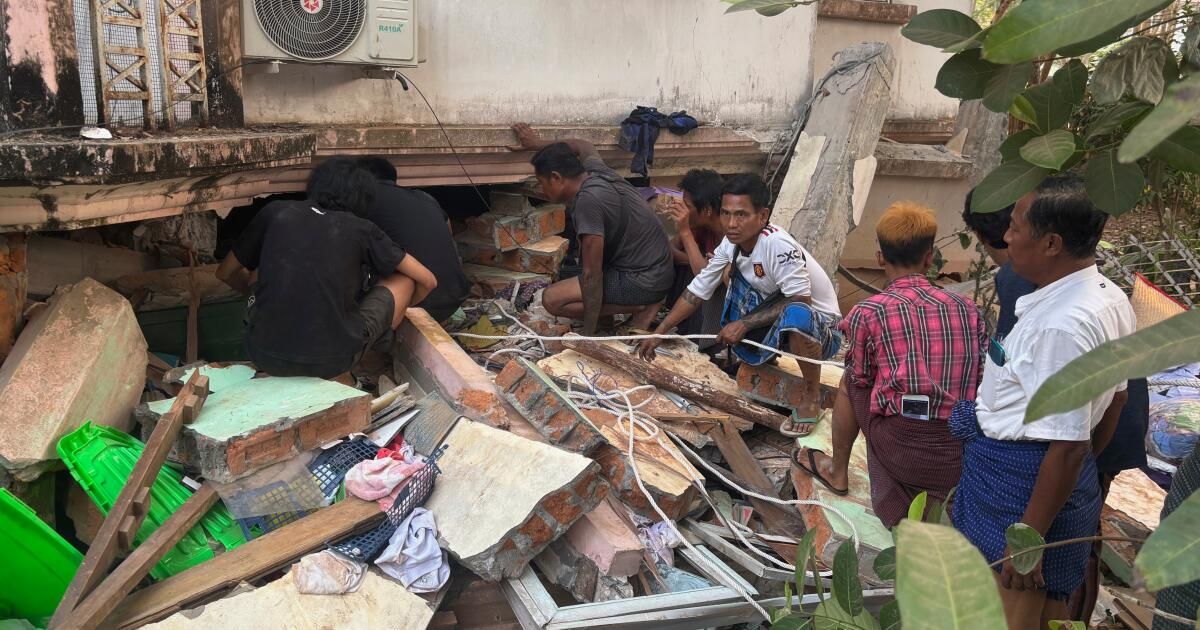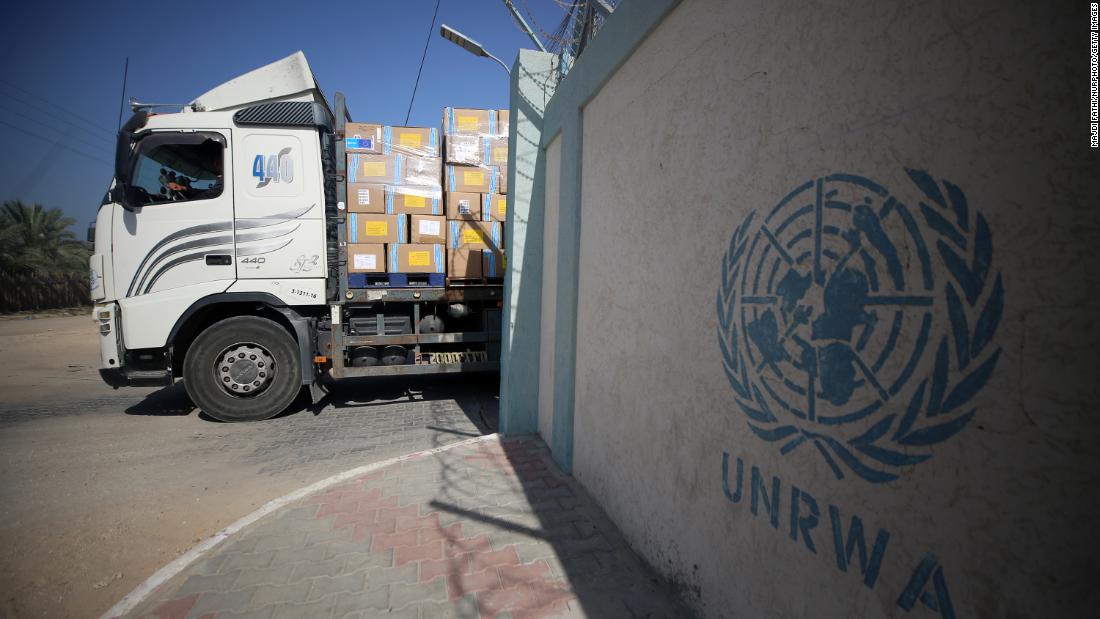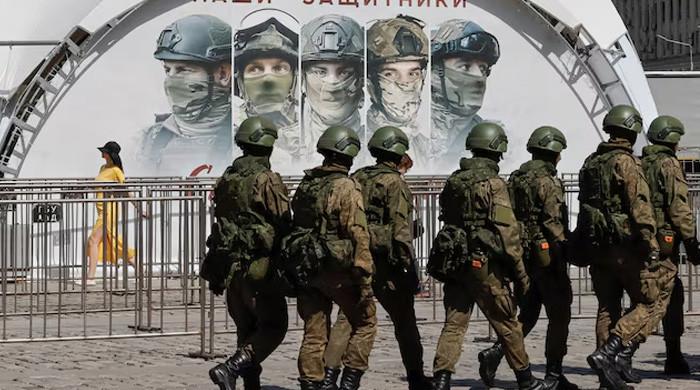Taipei, Taiwan – The earthquake of magnitude 7.7 that hit Myanmar on Friday has killed more than 1,600 people and wounded more than 3,400 and felt until Thailand, Laos and southern China.
The earthquake originated near Mandalay, the second largest city in Myanmar of approximately 1.5 million, rubbing tectonic plates along the saga fault, which crosses the center of the country. More than 600 miles away in Bangkok, the Thai capital, the buildings were taken care of. Rescue efforts in the region have been hindered by collapsed buildings, bridges and roads that now do not lead anywhere, and replicas continue to maintain residents to the limit.
The disaster, is not surprising, has asked questions about the preparation for earthquakes in Southeast Asia and further in places like Taiwan, which stands out for being very proactive, and California, which is in the middle of a “drought” of earthquake.
The Times spoke with Nurul Alam, a resistant infrastructure specialist who worked at the Asian Disaster Preparation Center in Bangkok, about which indicates the consequences on disaster preparation in Asia and beyond.
Rescuers work on the site of a large -height building in construction in Bangkok that collapsed after the magnitude 7.7 earthquake in neighboring Myanmar.
(Sakchai Lalit / Associated Press)
How prepared was Myanmar for the earthquake?
In 2014, Alam performed seismic risk assessments in Mandalay, near the epicenter of the recent earthquake. Given the geographical proximity of the city to an important failure line, its team had recommended that the government update its construction codes to make structures more resistant and improve the planning of the seismic contingency.
“I think that if they had followed the recommendations, there would have been less problems now, but I don't think that happened,” he said. “It was already risky. The buildings were vulnerable anyway, and people knew this would come.”

Rescuers seek survivors of earthquake 7.7 in Naypyidaw, Myanmar.
(Aung Shine OO / Associated Press)
Myanmar is also particularly vulnerable since the country has been involved in the Civil War since 2021. Millions of people have been displaced, and government and medical infrastructure has been paralyzed. Although Myanmar's information is closely controlled by the ruling Military Board, humanitarian workers and scientific organizations estimate devastation to be enormous.
How prepared was Thailand for the earthquake?
Thailand updated its earthquake construction codes in 2007 and published new regulations on seismic resistant design in 2021. Most of the Friday's earthquake damage was non -constructural, hitting partition walls, accessories, electricity and plumbing, Alam said. Structural beams, columns and sustained slabs, despite the extreme agitation and balancing of some high highs.
That tells Alam that Thailand has a high compliance with its construction codes. However, he said that residents were not well prepared in terms of how to respond and that contingency planning could help relieve interruptions on roads and public services. “What is commendable in Thailand is that whatever in the construction code, I think that most structures followed the code, and that is why the devastation was not so high,” he said.
More than a dozen people died in Bangkok due to the earthquake, and a 30 -story building under construction collapsed. The efforts to find about 80 missing people are ongoing.
How do you compare the answer with other places in Asia?
Often, areas with more earthquakes have stronger construction codes and contingency plans, so they are less affected by serious tremors, Alam said. Japan, for example, has strict seismic codes and early warning systems due to frequent earthquakes.
Taiwan, another island prone to earthquakes, takes similar precautions, which helped mitigate death and damage last year during its strongest earthquake in a quarter of a century. The magnitude 7.4 tremor, which could feel to Shanghai, killed about 18 people. A day before the earthquake in Myanmar, the Taiwan government organized civil defense drills on how to respond to a great disaster.
Some countries, Alam said, could do more to prepare.
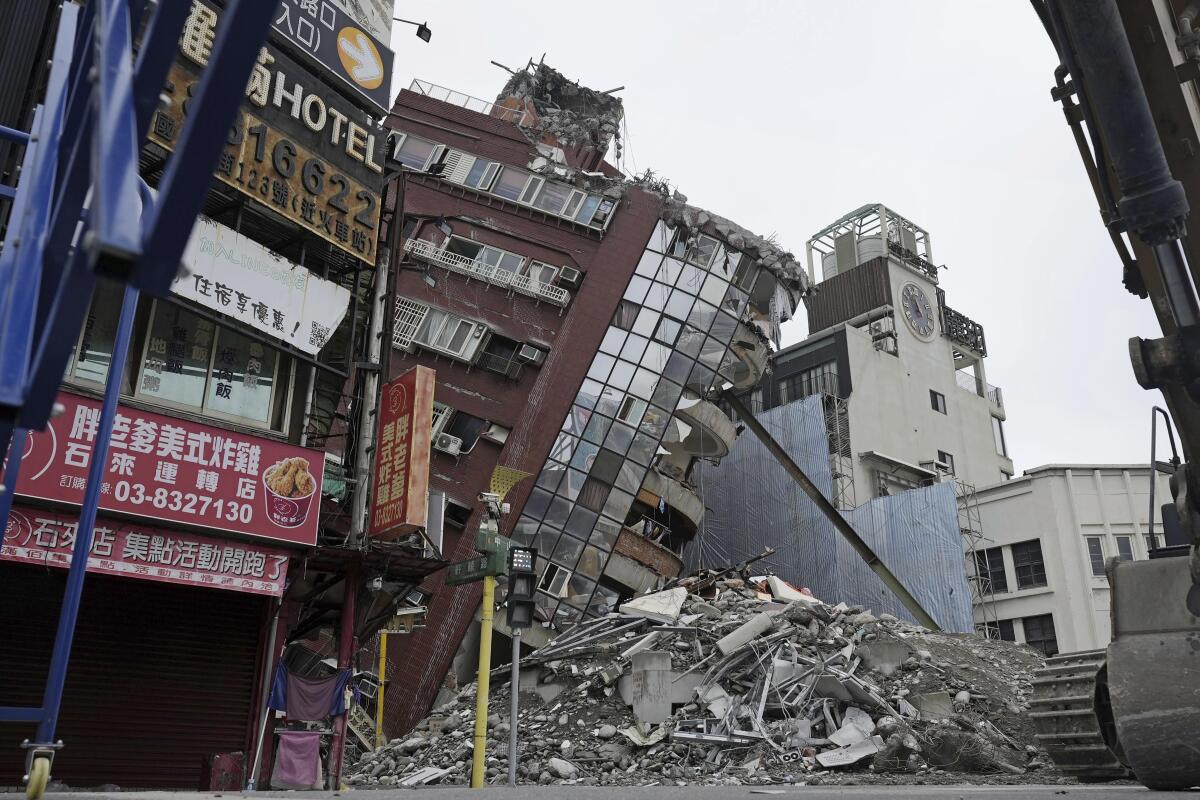
The demolition work is underway in a building collapsed by a powerful earthquake in Hualien City, Taiwan, in April 2024.
(Suo Takekuma / Associated Press)
Türkiye, who experienced a magnitude 7.8 tremor in 2023, has stronger earthquake codes than Bangkok, he explained, but less fulfillment in terms of construction. He said that buildings are also more vulnerable in India, Nepal and Bangladesh. A risk assessment in which he worked in Dhaka, the capital of Bangladesh, estimated that around 70,000 structures or buildings would collapse from an earthquake of similar magnitude.
What does this mean for places prone to earthquakes like California?
California would probably be better in an earthquake than many Asian countries due to their experience with natural disasters and strong construction and compliance codes, Alam said. He added that areas with a high risk of earthquakes in the United States also practice drills more frequently than places like Bangkok.
“California's seismic history has actually raided the way for all this information we have at this time,” Alam said. “I think Bangkok should learn from them.”
Los Angeles has promoted their wide earthquake security ordinance, the most difficult in the nation, which requires thousands of buildings to be evaluated and strengthened if necessary. In 2015, the city approved a historical regulation that requires that approximately 15,000 buildings be modified, so they will resist better violent agitation, and in 2022, the Times reported that more than 8,000 seismically vulnerable buildings have adapted throughout the city at an estimated cost of $ 1.3 billion. Last year, however, the Times reported that the data modernization data has been outdated for years.
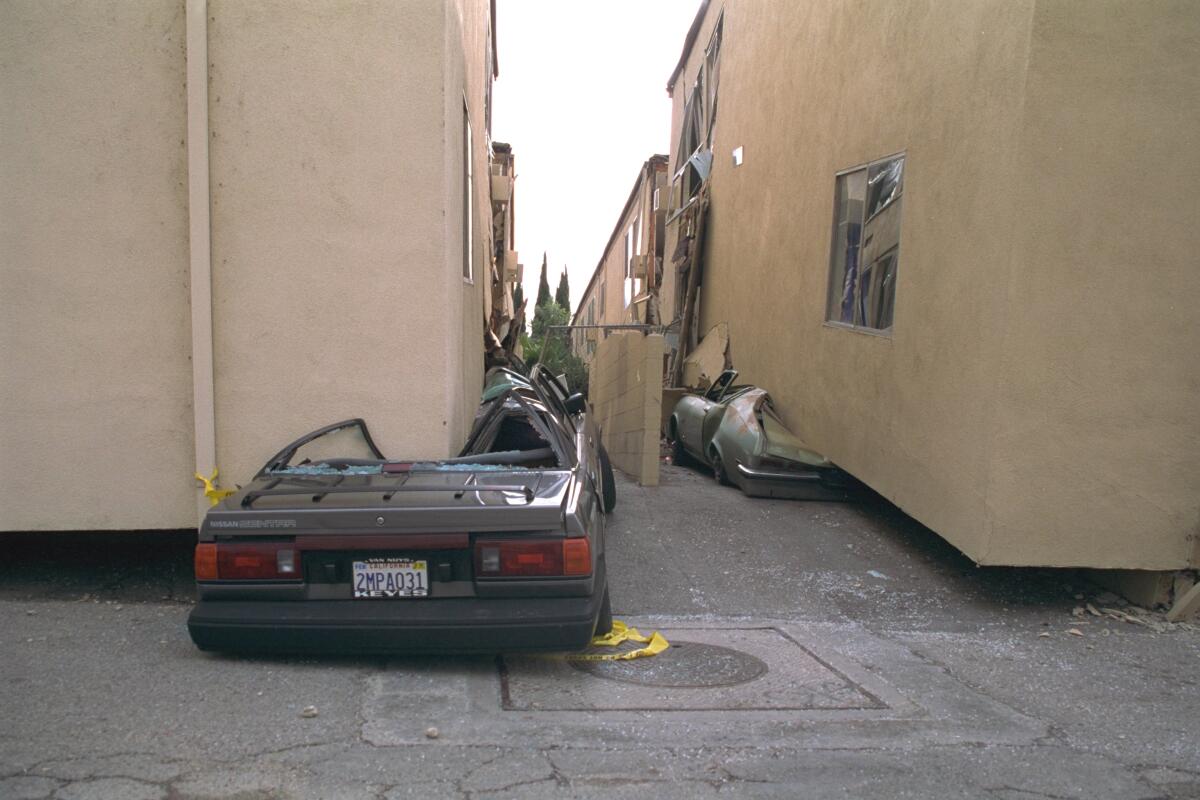
The buildings collapsed in cars during the Northridge earthquake in 1994.
(United States Geological Service)
What else can cities do to prepare better?
Alam said that detailed seismic risk evaluations and risks can help determine if the standards to build new buildings should be improved. These surveys must be done early, he said, because the construction codes can have been changing for years, which are normally updated by the government every five years.
The existing infrastructure can also be adapted to make vulnerable buildings more resistant, particularly those that have already been damaged by earthquakes. In general, the cost of modernization falls within 30% of the total cost of reconstruction, he said, and can be done in stages to maintain the installation in use.
“You can't stop the earthquakes, right? You can only be sure where we make our structures and our other facilities stronger and adapted against that type of disasters,” Alam said.
He said that while seismic problems received close attention at the beginning of the century, concerns about the effects of climate change began to eclipse them approximately a decade ago.
“It is on the rear shelf. No one is really worried about that until large earthquakes occur. It's not only in Thailand, it is actually worldwide,” he said. “This could be a attention call for governments.”

